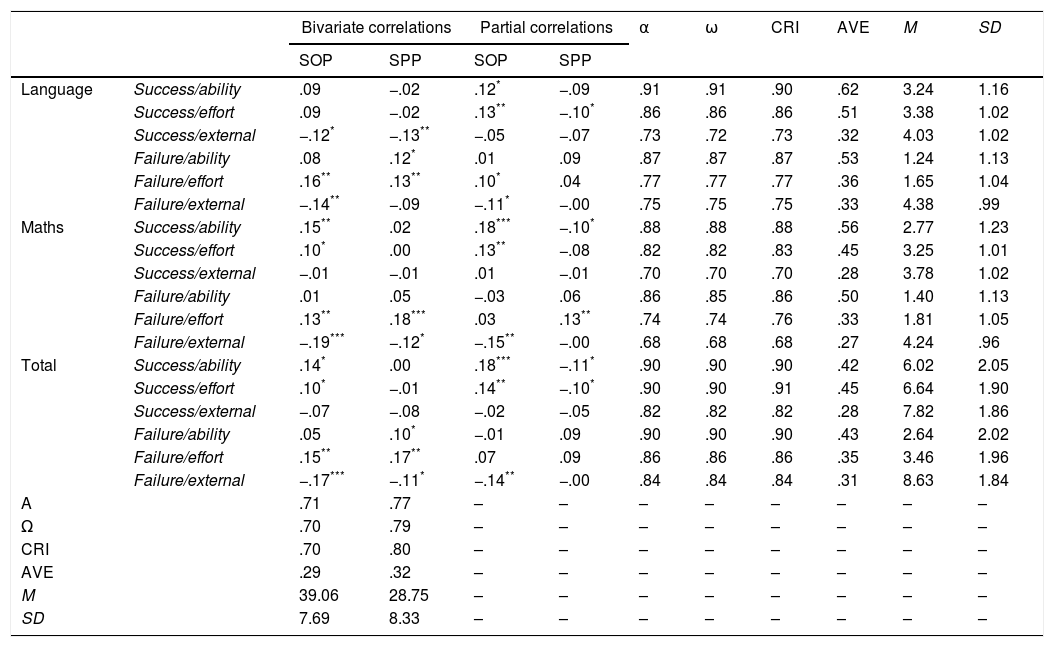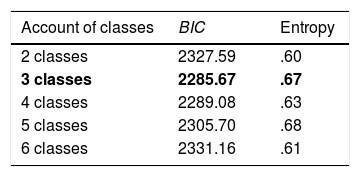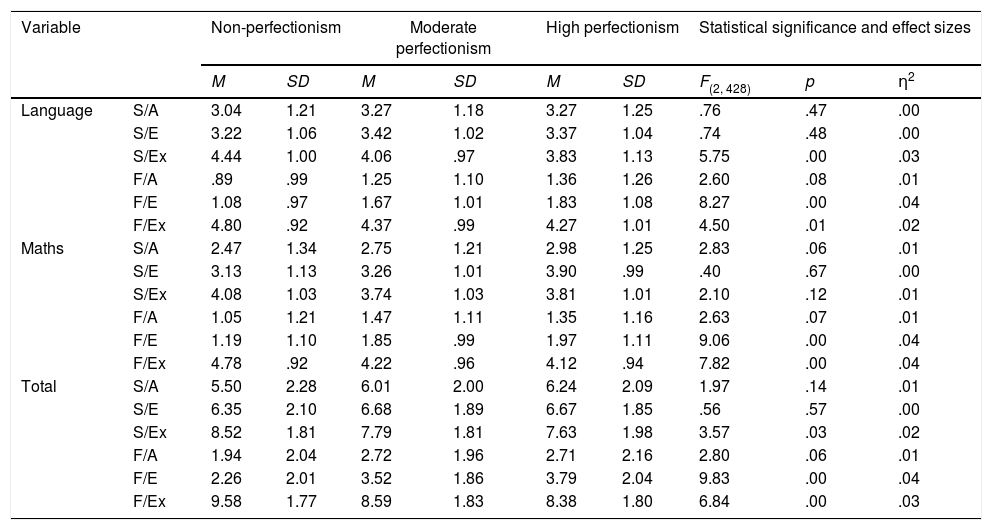The aim of this study is to identify the relationship between child perfectionism and academic causal self-attributions using a dual approach: variable-oriented and person-oriented. The sample consists of 431 Spanish students (49.42% girls) between the ages of eight and 11 years (M=9.60, SD=1.08). The Child and Adolescent Perfectionism Scale and the Sydney Attribution Scale are employed. Three perfectionism profiles are identified using latent class analysis: high perfectionism, moderate perfectionism and non-perfectionism. Non-perfectionism scores significantly higher than high and moderate perfectionism on failure and success self-attributions to external causes, although in the case of success, these differences are only significant for the language area and the total scores. In contrast, non-perfectionism scores significantly lower than the other two profiles on self-attributions of failure to lack of effort. Effect sizes for the observed differences are generally moderate (d=between 0.44 and 0.75). In addition, results of the bivariate and partial correlational analyses indicate the shared and unique relationships between perfectionist dimensions and causal self-attributions. Thus, it allows discussing the perfectionist dimension which explains the inter-class differences found.
El objetivo de este estudio es analizar la relación entre el perfeccionismo infantil y las autoatribuciones causales académicas a través de un doble enfoque: centrado en la variable y en la persona. La muestra se compone de 431 estudiantes españoles (49.42% mujeres) con edades comprendidas entre los ocho y los 11 años (M=9.60, DE=1.08). Se utilizan la Child and Adolescent Perfectionism Scale y la Sydney Attribution Scale. A través del latent class analysis se obtiene una solución de tres perfiles perfeccionistas: perfeccionismo alto, perfeccionismo moderado y no-perfeccionismo. El grupo no-perfeccionismo obtiene puntuaciones significativamente más altas que el perfeccionismo alto y moderado en las autoatribuciones del fracaso y el éxito a causas externas, aunque en el caso del éxito, estas diferencias solo son significativas para el área de lenguaje y el total de las puntuaciones. Por el contrario, el no-perfeccionismo puntúa significativamente más bajo que los otros dos grupos en las autoatribuciones del fracaso a la falta de esfuerzo. Los tamaños del efecto para estas diferencias son, generalmente, moderados (d=entre 0.44 y 0.75). Además, los resultados de los análisis de correlaciones bivariadas y parciales muestran la relación compartida y única entre las dimensiones perfeccionistas y las autoatribuciones causales, permitiendo discutir qué dimensión perfeccionista explica las diferencias interclase encontradas.










